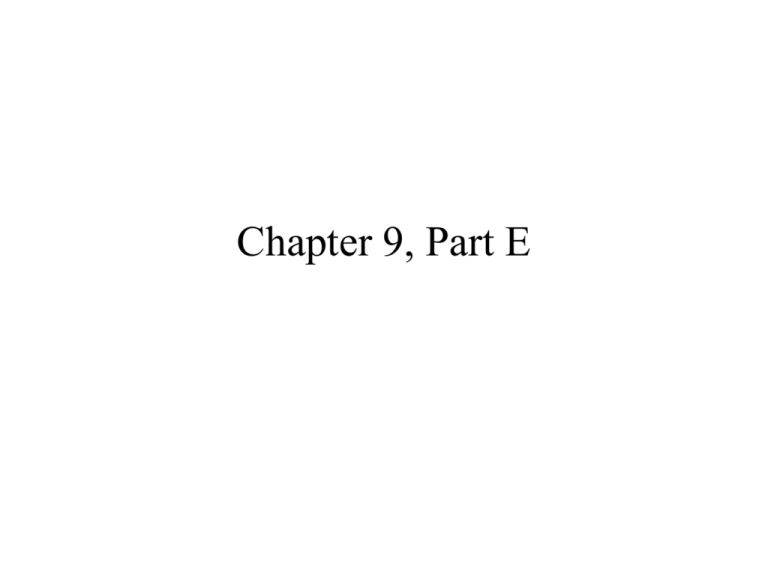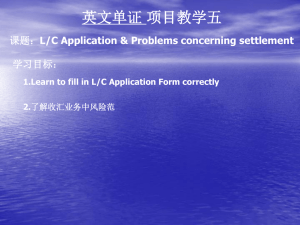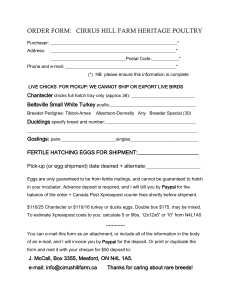presentation source
advertisement

Chapter 9, Part E VII. Calculating the Probability of Type II Errors A common decision in business is whether to accept a shipment or not, based upon a sample of the entire shipment. This is called a “lot acceptance decision” because you will either accept the entire shipment or reject the lot. Recall a type II error: We “fail to reject” Ho, when the Ha was “true”. A. An Example The authors describe a scenario where a producer is receiving a shipment of batteries that claim a life of “at least 120 hours”. Ho: 120 hours Ha: > 120 hours If = .05, then Z.05 = -1.645. If Ho is not rejected, we would accept the shipment. The Test • Suppose we sample n=36 and =12 from past tests. • What is the sample mean that would cause us to reject Ho? • Set up the test statistic and solve for x-bar. x x 120 • So reject Ho if: Z 1.645 n 12 36 Moving toward a type II error • Solving the previous equation for x-bar = 116.71 hours. • This means that you will reject a shipment if you test 36 batteries and their sample mean lifespan is less than 116.71 hours. • Any sample mean above 116.71 hours and you will “fail to reject” Ho, risking a type II error. B. The Power of the Test • A type II error in this scenario is if the true shipment mean is less than 120 hours, but we make the decision to accept Ho that it is at least 120 hours. • This would only happen if <120 hours. • What if the true =113 hours? • What is the probability of accepting the shipment is >=120 and thus making a type II error? If =113 hours, and we fail to reject any shipment with a mean over 116.71 hours, what is the probability that we would “accept” Ho? .0314 µ=113 116.71 Z x 116.71 113 1.86 12 n 36 The Prob (x-bar>=116.71) = .5-.4686 = .0314 So the probability of making a type II error, when =113 hours, is the area in the tail which equals =.0314. See table 9.3 in the text for a variety of possible population means less than 120 hours and the corresponding probability of type II errors. If <120 and we correctly reject Ho, there is a (1-) probability of doing so. (1-) is the “power” of the test, the probability of correctly rejecting H0 when it is false. See figure 9.16 in the text for a power curve for this lot acceptance test. C. Summary 1. Set up Ho and Ha. 2. Use to establish the rejection rule for Z. 3. Using the rejection rule, solve for the x that makes the rejection region for the test. 4. Using this result, state value of x that leads to acceptance of Ho; this is the acceptance region for the test. 5. Using the sampling distribution of x for any value of µ from Ha and the acceptance region from step 4. Compute the probability that x is in the acceptance region. This is the at the chosen µ. Do problem #61 for more practice and come to class with plenty of questions.



